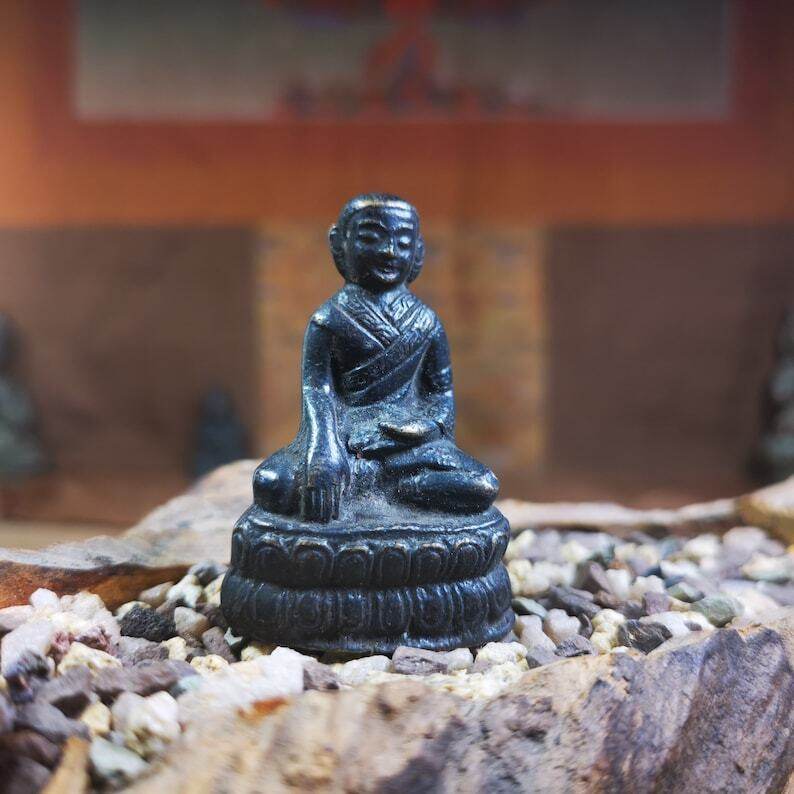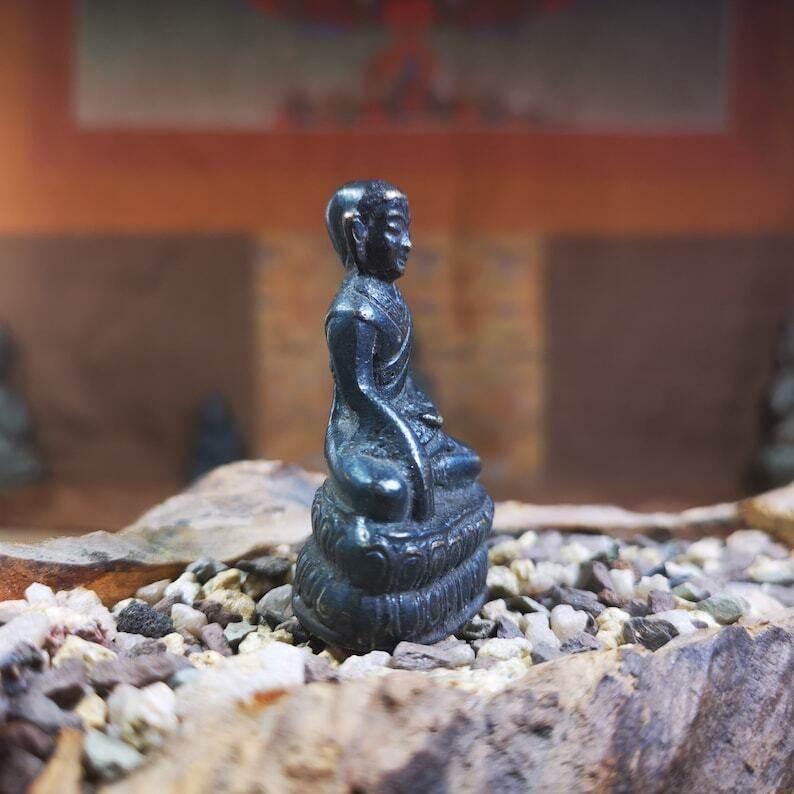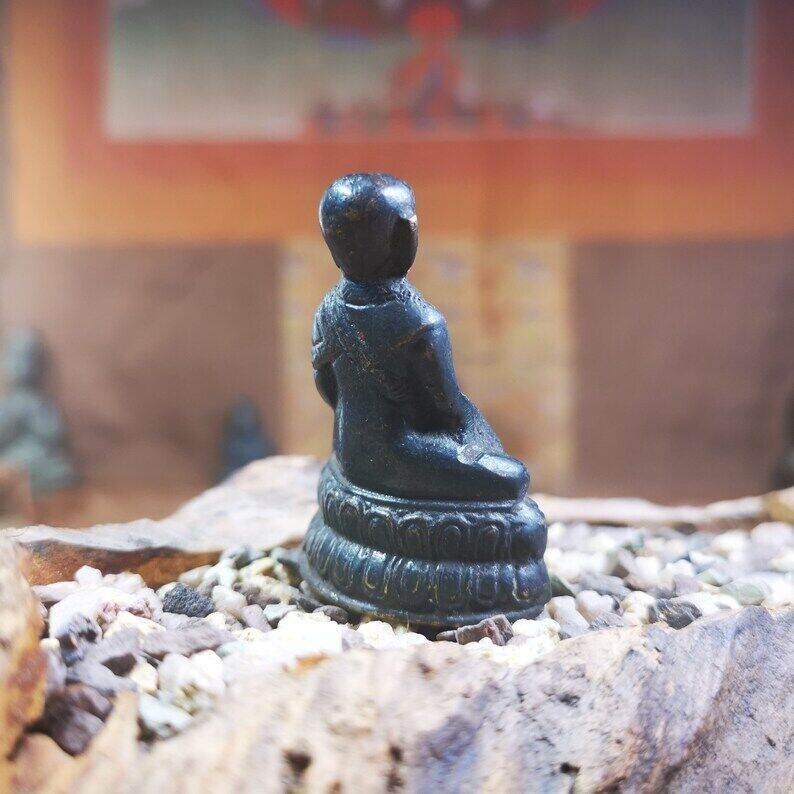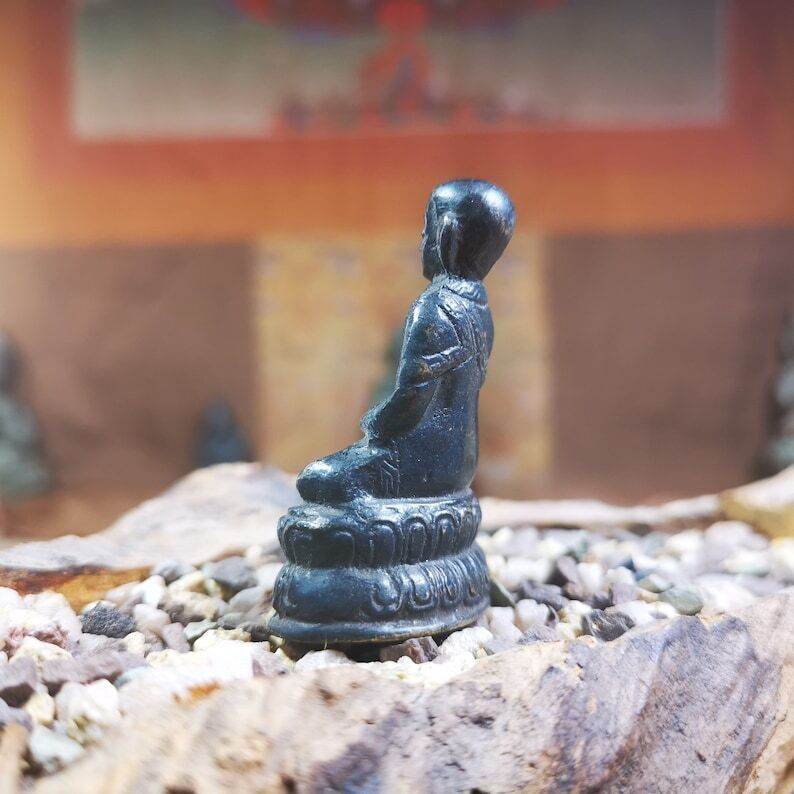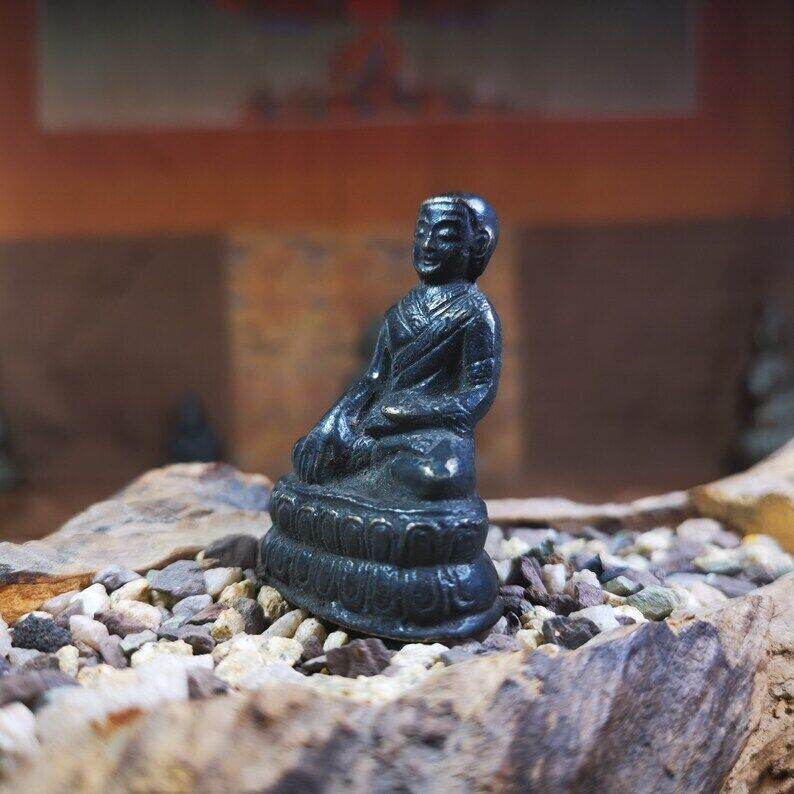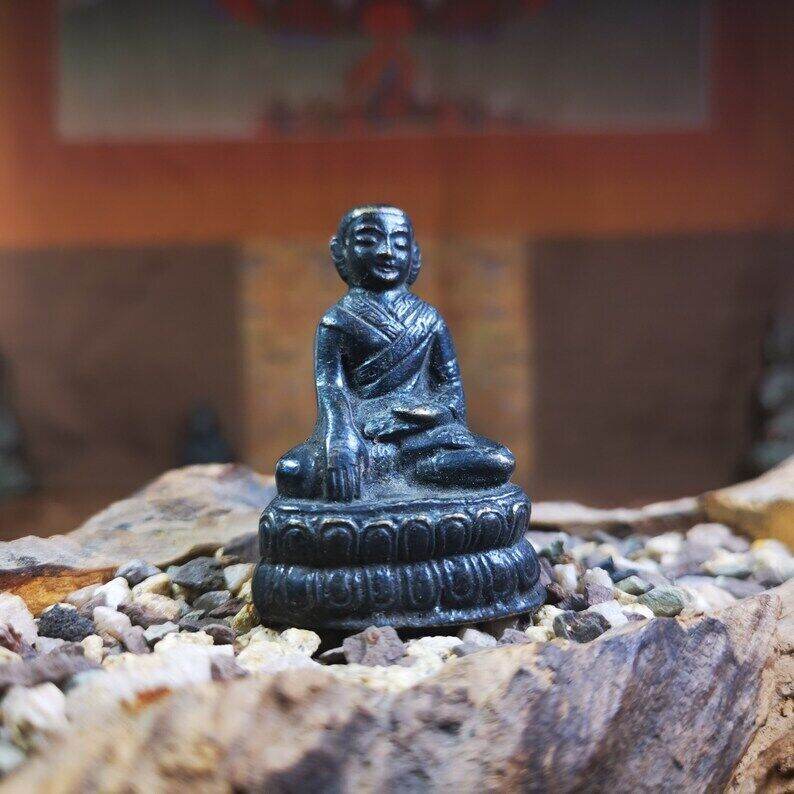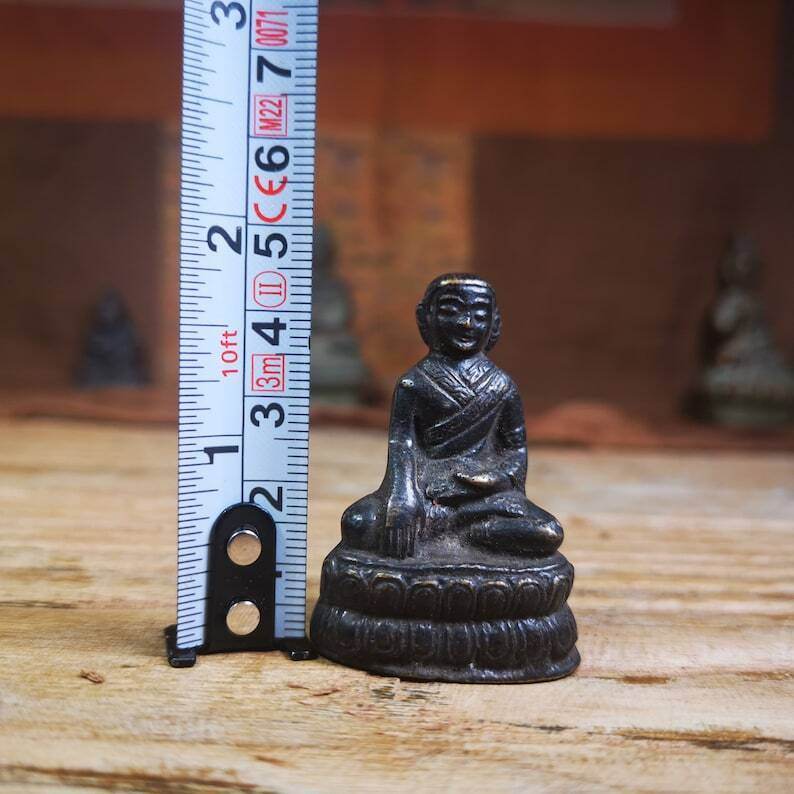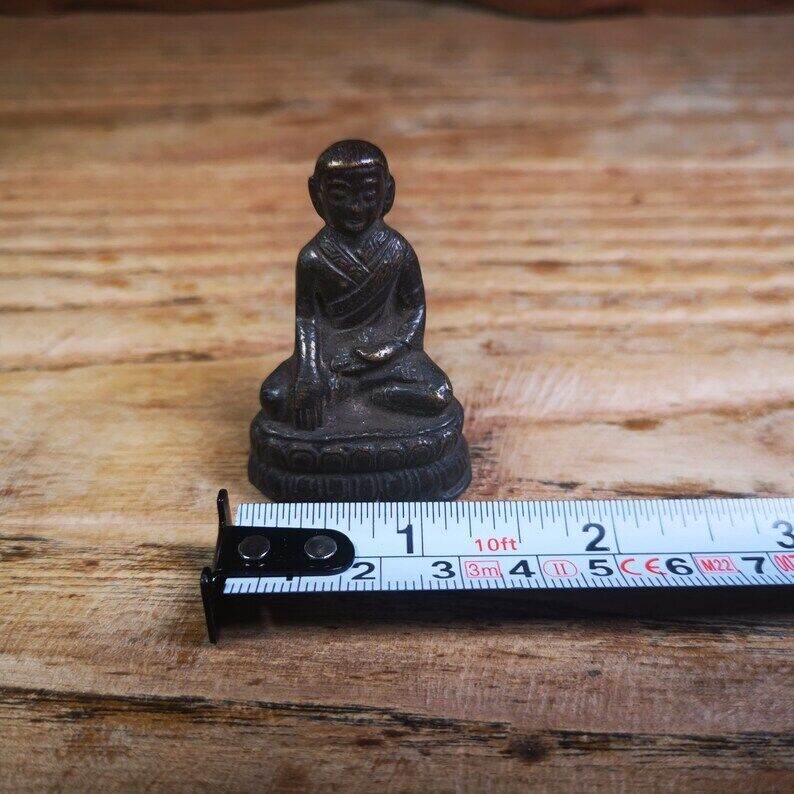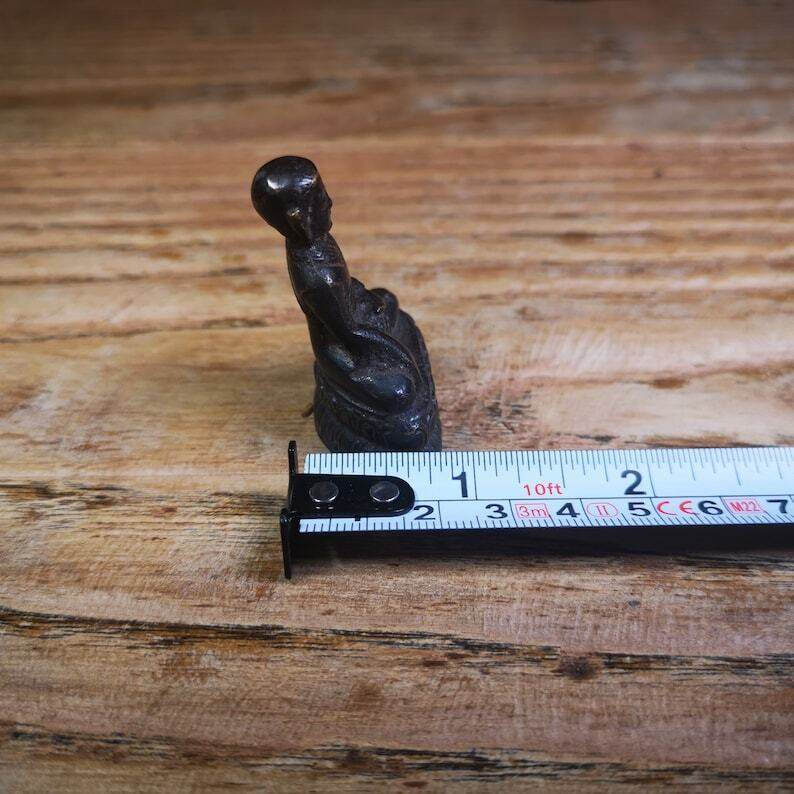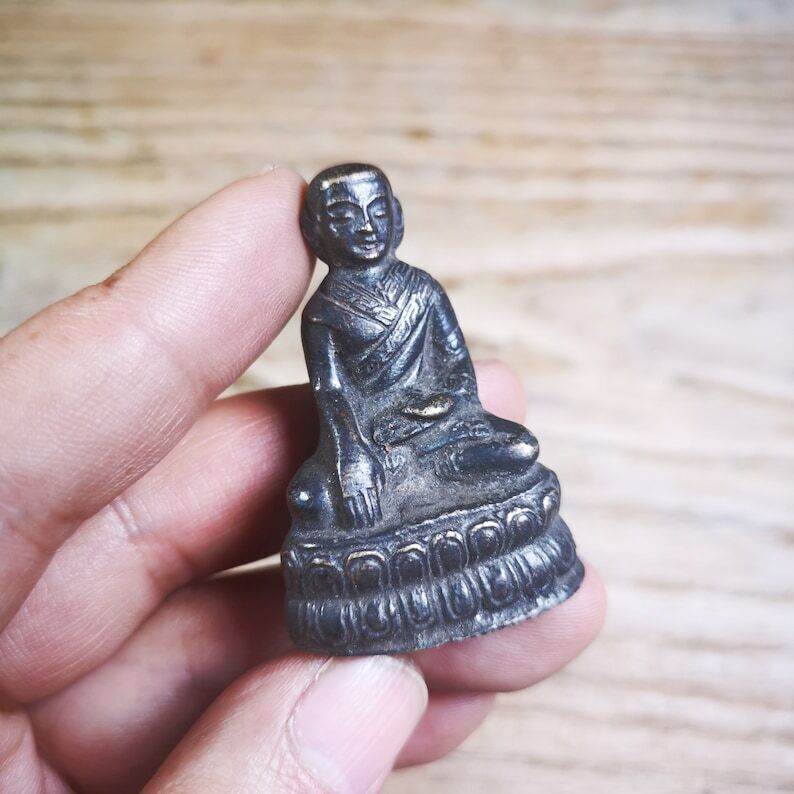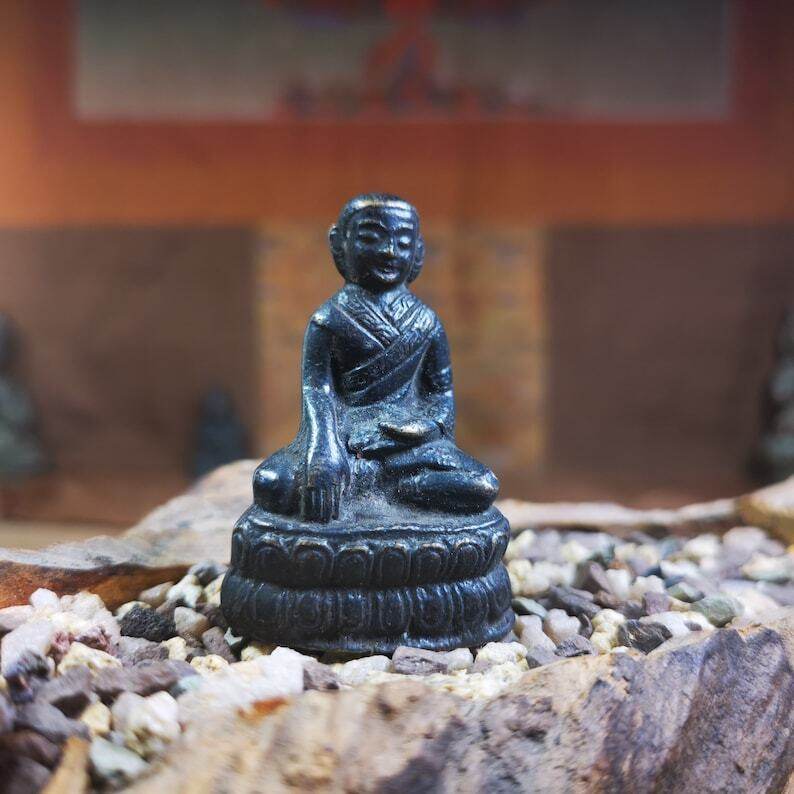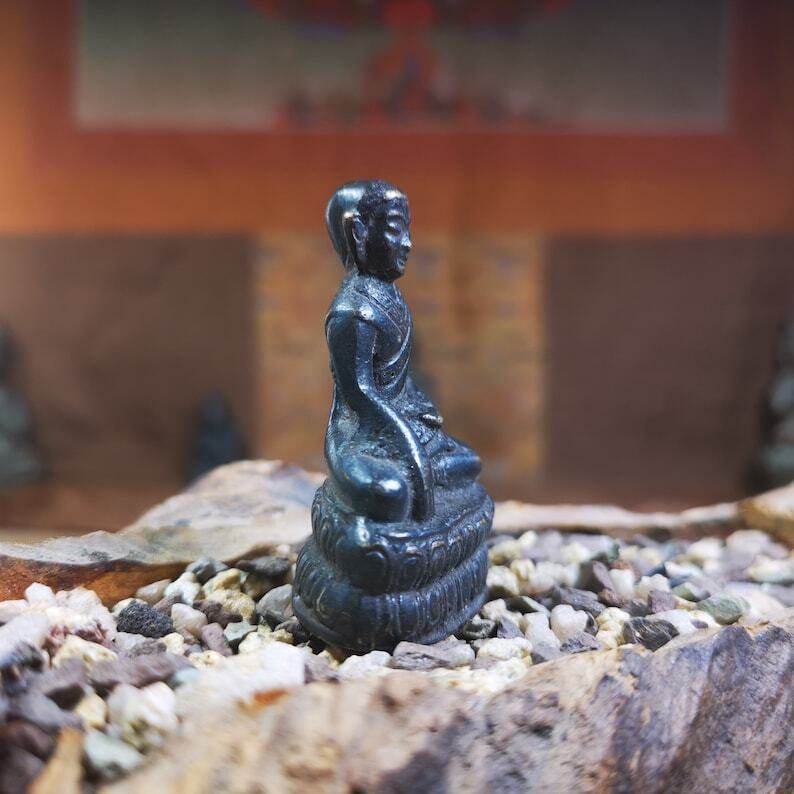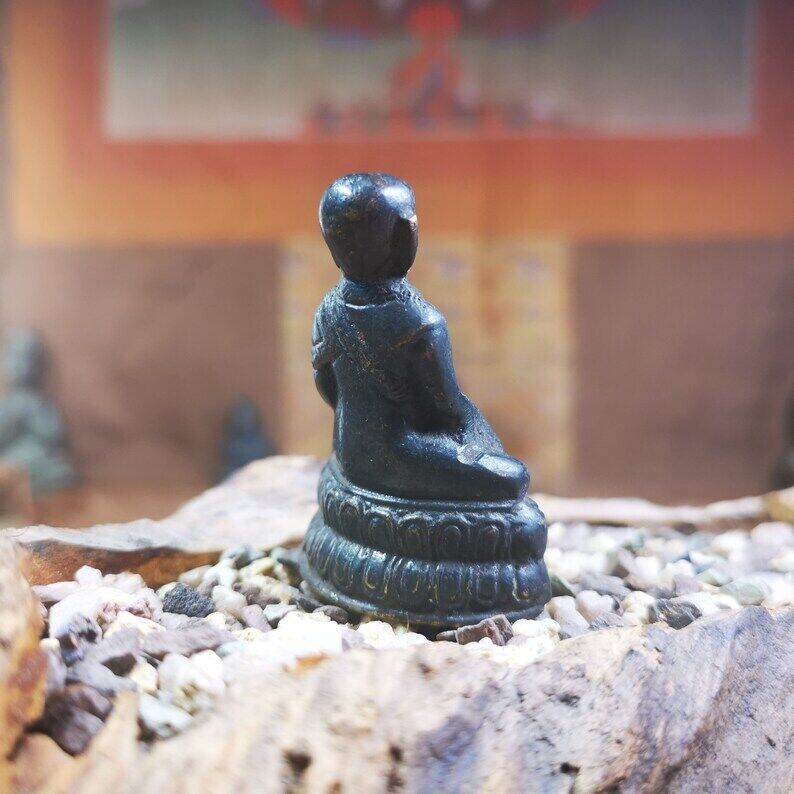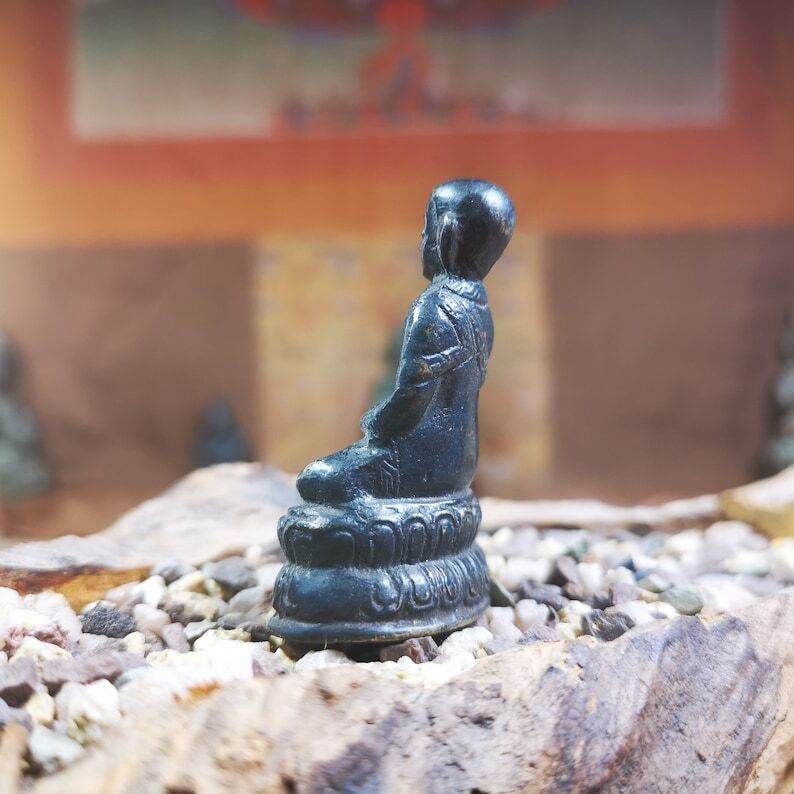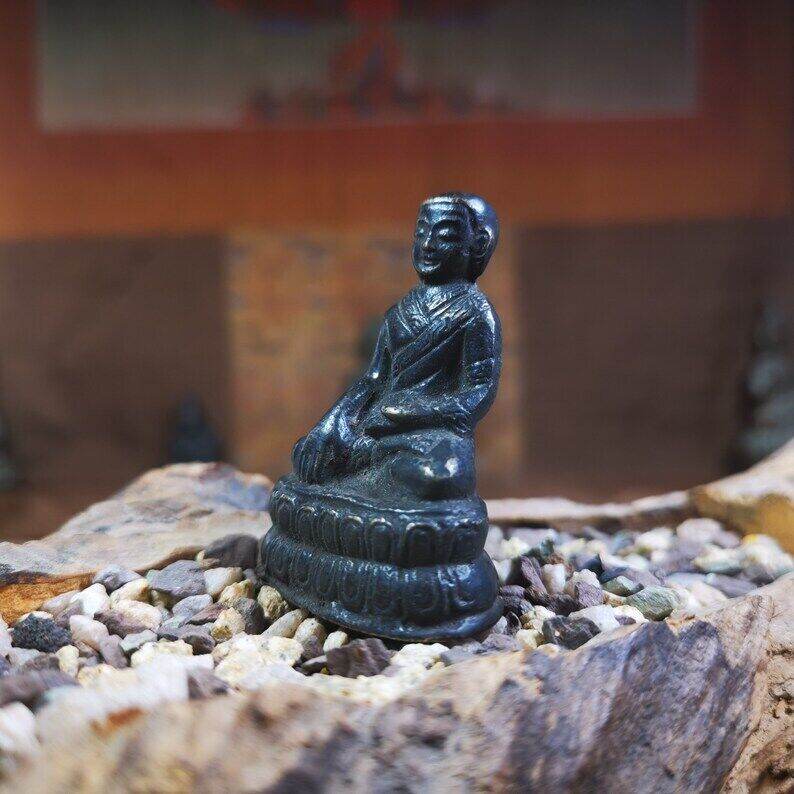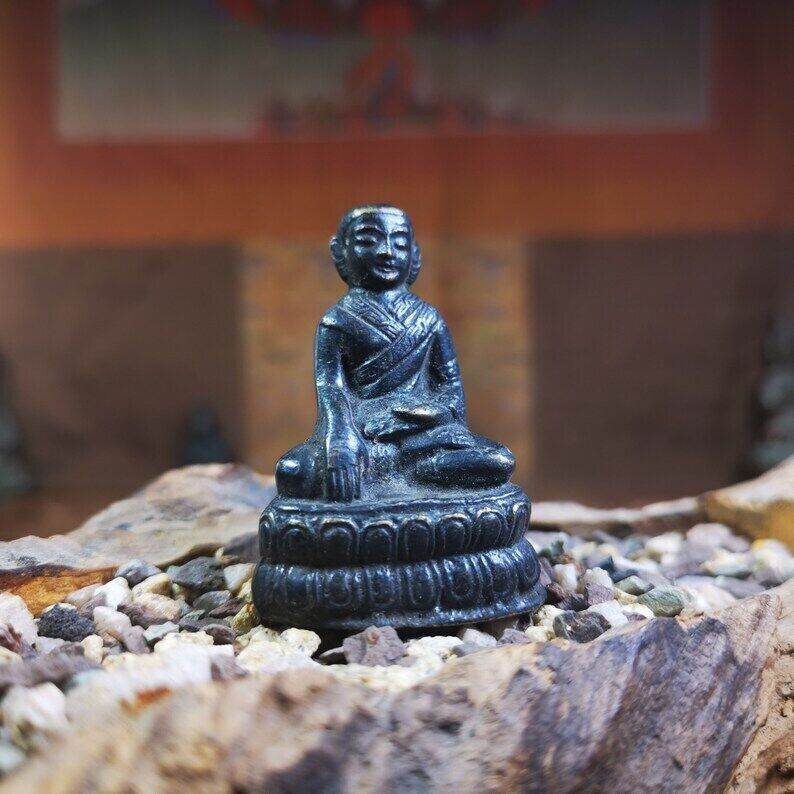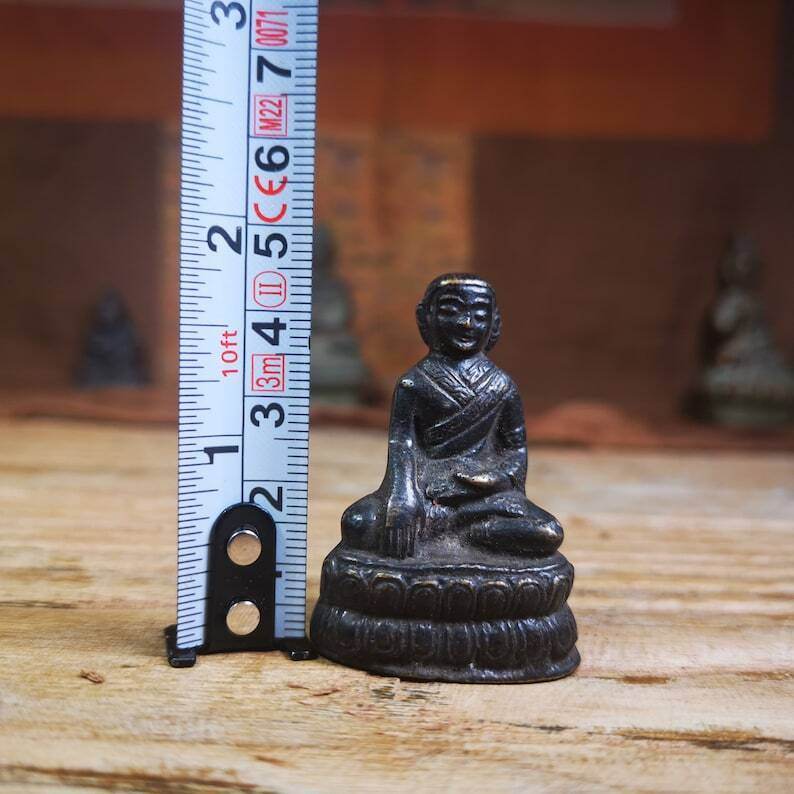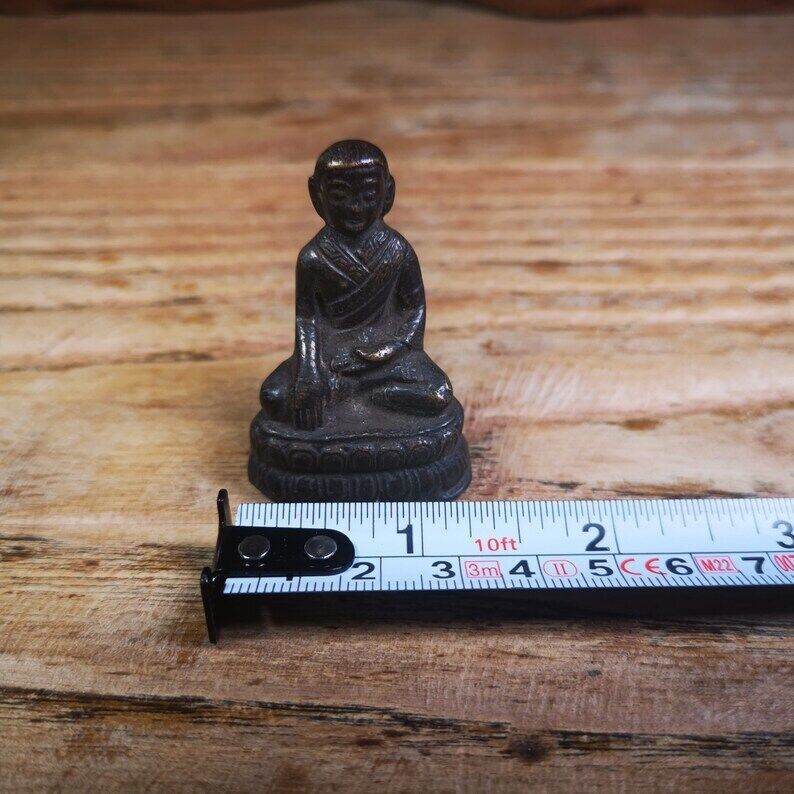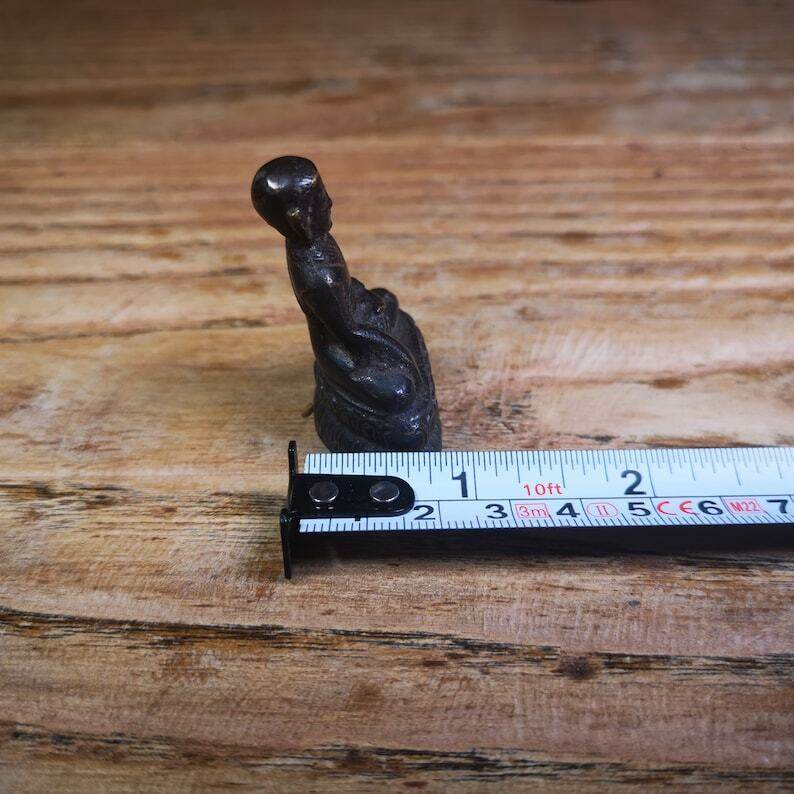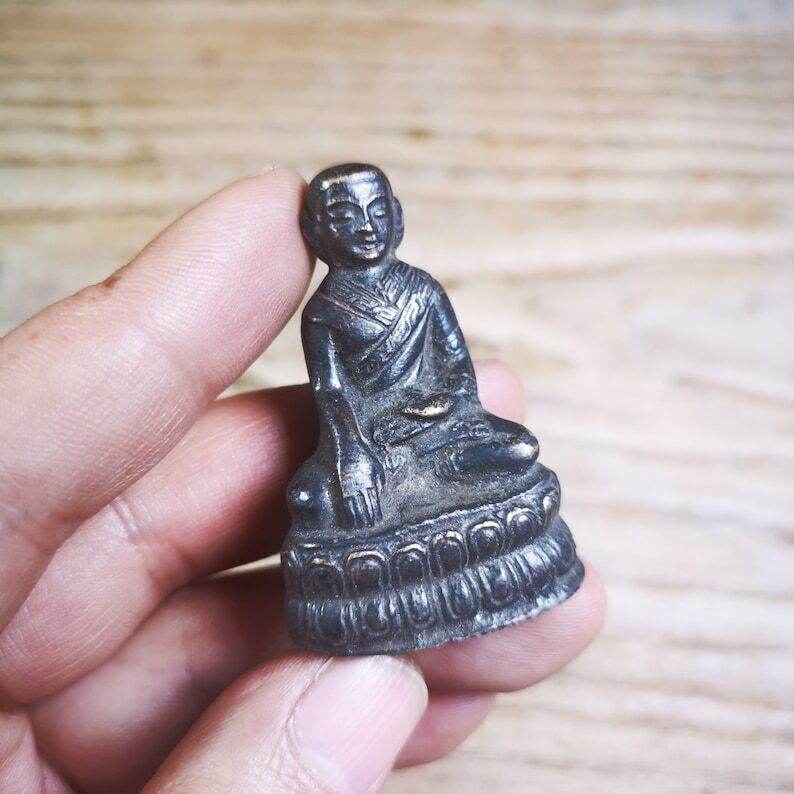Buddha Statue Shakyamuni
Buddha Statue Shakyamuni
Couldn't load pickup availability
This Shakyamuni was collected from Gengqing Monastery,about 80 years old,made of brass.
❤Details
Material: brass
Craft: Manual mold, pouring
Color:black
Size:
Height:about 45mm / 1.77inches
Width :about 30mm / 1.18inches
Thickness:about 20mm / 0.79inches
You'll get 1pc statue as pictures shown.
❤ABOUT SHAKYAMUNI
Gautama Buddha, popularly known as the Buddha (also known as Siddhattha Gotama or Siddhārtha Gautama or Buddha Shakyamuni), was a Sramana who lived in ancient India (c. 5th to 4th century BCE).
He is regarded as the founder of the world religion of Buddhism, and revered by most Buddhist schools as a savior,the Enlightened One who rediscovered an ancient path to release clinging and craving and escape the cycle of birth and rebirth. He taught for around 45 years and built a large following, both monastic and lay.
His teaching is based on his insight into the arising of duḥkha (the unsatisfactoriness of clinging to impermanent states and things) and the ending of duhkha—the state called Nibbāna or Nirvana (extinguishing of the three fires).
The Buddha was born into an aristocratic family in the Shakya clan but eventually renounced lay life. According to Buddhist tradition, after several years of mendicancy, meditation, and asceticism, he awakened to understand the mechanism which keeps people trapped in the cycle of rebirth. The Buddha then traveled throughout the Ganges plain teaching and building a religious community. The Buddha taught a middle way between sensual indulgence and the severe asceticism found in the Indian śramaṇa movement.He taught a training of the mind that included ethical training, self-restraint, and meditative practices such as jhana and mindfulness.
